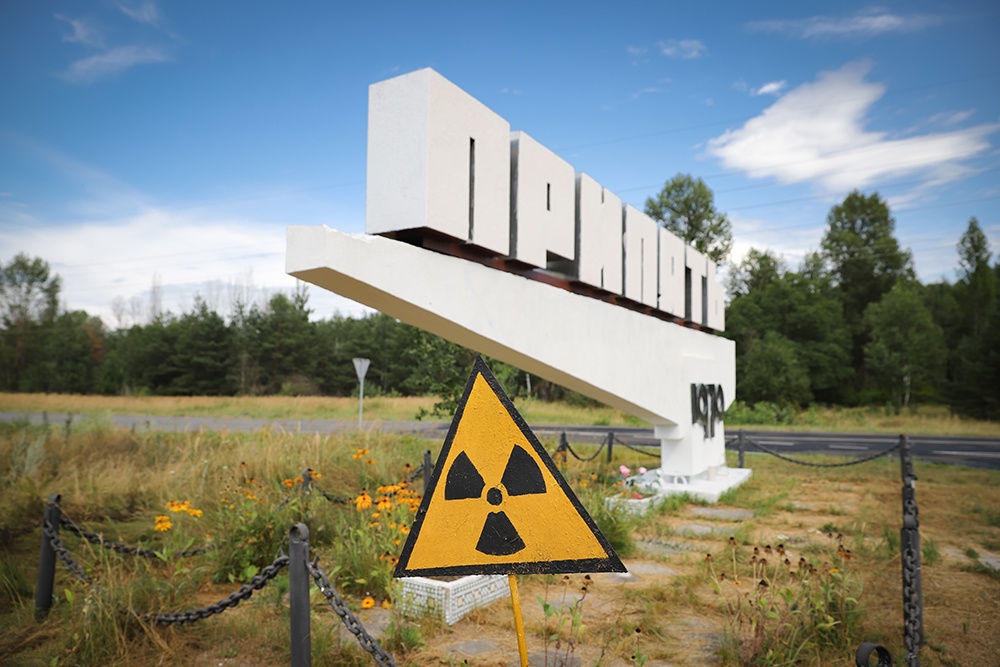

As we enter week three of the Russian invasion of Ukraine, events continue to spiral out of control.
Casualties mount on both sides, including increasing numbers of Ukrainian civilians. On March 9, a maternity hospital was bombed, a contravention of the Geneva Convention.
Last week, I discussed increasing concern that the war in Ukraine could result in a nuclear catastrophe. Unfortunately, this risk has only increased.
Here is why:
First, let’s consider the situation at the decommissioned Chernobyl nuclear power facility. On March 8, the electrical supply to the still-fueled Chernobyl reactors was shut off. Reactors need electrical pumps to circulate water to cool the uranium fuel rods in the reactor core and also spent fuel rods in storage pools.
Normally, there is a redundant system to power the pumps: electricity generated by the facility; electricity imported from the regional or national electrical grid; and diesel fuel powered generators.
Exactly how power was lost at Chernobyl is unclear. There is no electrical input from the plant and the Ukraine national grid is under considerable stress. But it takes something as simple as cutting (intentionally or not) power lines leading from the grid to the reactor to shut this safeguard off.
Fortunately, we are told, the diesel generators kicked in and power was restored. However, with the Russian attack on Ukraine’s petrol supply, there is limited ability to refuel the Chernobyl generators. Time may be running out. Let’s also consider the more than 100 Ukrainian nuclear workers involuntarily sequestered at the facility under Russian military guard.
Next, we have the crisis at the Zaporizhzhya nuclear power facility, where Russian troops took control 10 days ago (The Cancer Letter, Feb. 25, 2022). Two of six reactors were offline, but the remaining four are operational. The IAEA continues to report normal operations—but for how long?
How well Ukrainian operators are performing in a tense militarized setting is concerning. Essentially, they are being held hostage. Might some try to escape the complex and evacuate with their families to western Ukraine or bordering countries, leaving the complex with insufficient manpower?
That’s not all.
Three other nuclear power facilities in Rivno, Khmelnitsky, and South Ukraine are being closed in on by Russian troops. Last week, I mentioned that a spent nuclear fuels storage facility near Kyiv was bombed, as was a generator supplying electricity to another storage facility near Kharkiv (The Cancer Letter, March 4, 2022).
But we come now to even bigger threats. The war in Ukraine is not going as Russia planned, and the chance of a quick victory or capitulation has evaporated.
One way the Kremlin could reverse this situation quickly is using a tactical nuclear weapon against Ukraine as a show of force, not unlike the U.S. atomic bombings of Hiroshima and Nagasaki in WWII. (Whether the atomic bombing ended the war more quickly is debated by historians.)
Would Russia do this, and what might be the NATO response? No one knows or wants to know.
Lastly, we come to the biggest nuclear threat. Russia has been effectively isolated from the global economy and the ruble has collapsed. There is no easy way out of this situation and the Kremlin has declared economic sanctions akin to an act or war.
At the same time, President Putin has ordered Russia’s nuclear forces to move to a heightened state of special regime of combat duty. No one outside the Kremlin knows exactly what this means, but it is surely not good news.
As Thomas Friedman said in The New York Times, “Putin has no good way out.” Defeat is not a viable option. Russian history is replete with examples of the fate of leaders who lost a war.
In a bit of irony, Russian General Evgeny Maslin, who helped transfer Ukraine’s nuclear arsenal to The Russian Federation, died 10 days ago in Moscow. He hoped his efforts would reduce the risk of a nuclear war. But, as I mentioned last week, we might not have had this war had Ukraine retained one or more deliverable nuclear weapons.
Russian forces are advancing closer to the border of several NATO countries. Moreover, the U.S. and other European countries are supplying the Ukrainian army with tactical weapons to be used against Russian troops. These weapons are entering Ukraine through NATO countries like Poland. Giving Ukraine MIG fighter jets is currently being discussed.
How long will the Kremlin tolerate this situation? It’s not difficult to imagine an incursion, intentional or not, of the Russian military into Poland, Hungary, or Romania. Under Article 5 of the Washington Treaty, the U.S. is committed to collective defense, meaning an attack against one ally is considered as an attack against all allies.
The bottom line so far: Russia’s miscalculation was that an invasion of Ukraine would be over quickly and the West would not mount an effective response (think of Crimea).
One is reminded of a quote from General Helmuth von Molke, the Prussian army chief of staff: “No plan ever survives first contact with the enemy.” Please recall that WWI started with a seemingly unimportant regional ethnic event, the assassination of Archduke Franz Ferdinand of Austria-Hungary in Sarajevo.
History has a nasty way of repeating itself. Let’s hope this is not the case now.











